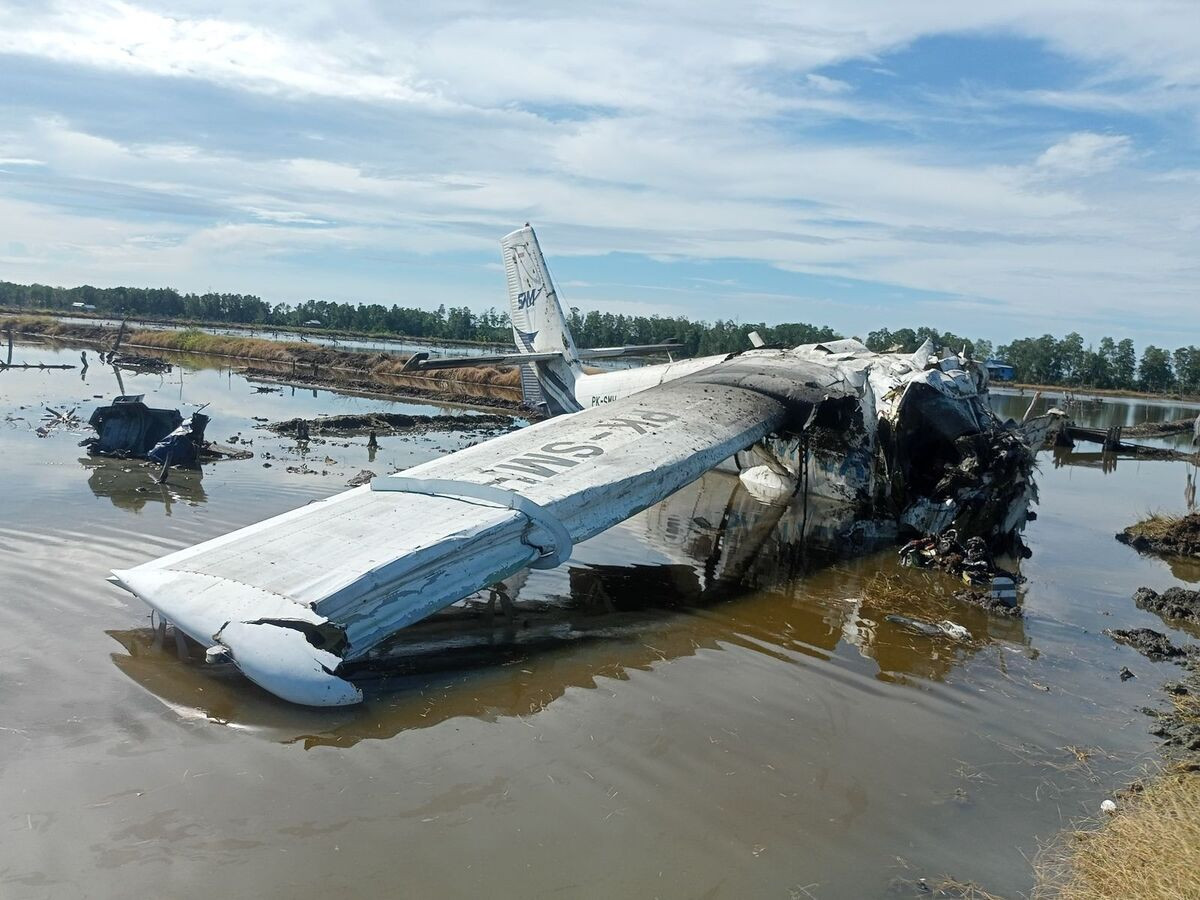Tragic Plane Crash Claims Lives in Gorontalo, Indonesia
A devastating aviation incident occurred on Sunday morning, resulting in the deaths of multiple individuals when a DHC-6 Twin Otter aircraft crashed in Pohuwato regency, Gorontalo. The aircraft, operated by Canada’s SAM Air, departed from Djalaluddin Airport in Gorontalo at 7:03 a.m. Central Indonesia Time and was expected to arrive at Bumi Panua Airport at approximately 7:33 a.m. However, contact was lost mere minutes before the aircraft was scheduled to touchdown, leading to a swift response from local authorities.
Details of the Incident
The tragic crash quickly drew the attention of the Gorontalo Search and Rescue Agency. Head of the agency, Heriyanto, confirmed that notifications about the crash were received from AirNav Makassar around 9:00 a.m. local time. “The SAM Air aircraft’s last contact was with AirNav Makassar, and we received information that it had crashed near Bumi Panua Airport in Pohuwato,” he stated on Sunday, as reported by Kompas.com.
Investigations are now underway to determine the series of events that led to the disaster. The DHC-6 Twin Otter is known for its versatility, commonly used for both passenger and cargo services, but this incident raises critical questions regarding aviation safety protocols in the region.
Official Responses and Investigations
Lukman F. Laisa, acting civil aviation director general at Indonesia’s Ministry of Transportation, announced that his office is collaborating with the National Transportation Safety Committee (KNKT) to thoroughly investigate the crash. “I hope the investigation proceeds smoothly, and that preventative measures can be taken in the future to enhance aviation safety,” Laisa said on Sunday. The coordinated response aims to address potential safety concerns and prevent future tragedies.
Context and Background
As air travel continues to be a vital component of transportation in Indonesia, this incident highlights the urgent need for stringent aviation regulations and safety measures to protect passengers. The DHC-6 Twin Otter has a reputation for reliability; however, incidents such as this remind both the industry and the public that advancements in safety must remain a priority.
Air travel in Indonesia has been scrutinized over the years, with improvements called for in response to previous incidents. The loss of life in this recent crash casts a somber shadow over Gorontalo, raising concerns about the broader implications for the aviation sector nationwide.
Potential Industry Impact
The ramifications of this incident extend beyond Gorontalo and have the potential to impact the aviation industry in Indonesia at large. Stakeholders, including regulators and airlines, must engage in a thorough review of operational practices and safety protocols. This incident may serve as an impetus for reform, pushing for enhancements in maintenance standards, pilot training, and emergency response measures.
In Summary
The tragic crash of a DHC-6 Twin Otter aircraft near Bumi Panua Airport serves as a somber reminder of the risks associated with air travel. The loss of life prompts a collective call to action within the aviation industry to bolster safety measures and ensure that such incidents do not become a recurring theme. As the investigation unfolds, transparency and accountability will be crucial for restoring public confidence in air travel safety.
With aviation accidents like this affecting communities far and wide, discussions surrounding the importance of safety enhancements are more critical than ever. Readers are encouraged to stay informed about the investigation and to engage in dialogue on the future of aviation safety in Indonesia and beyond.
For more news updates on aviation safety and technology, stay connected with our articles on Shorty-News.
What are your thoughts on aviation safety protocols in Indonesia? Leave your comments below!


